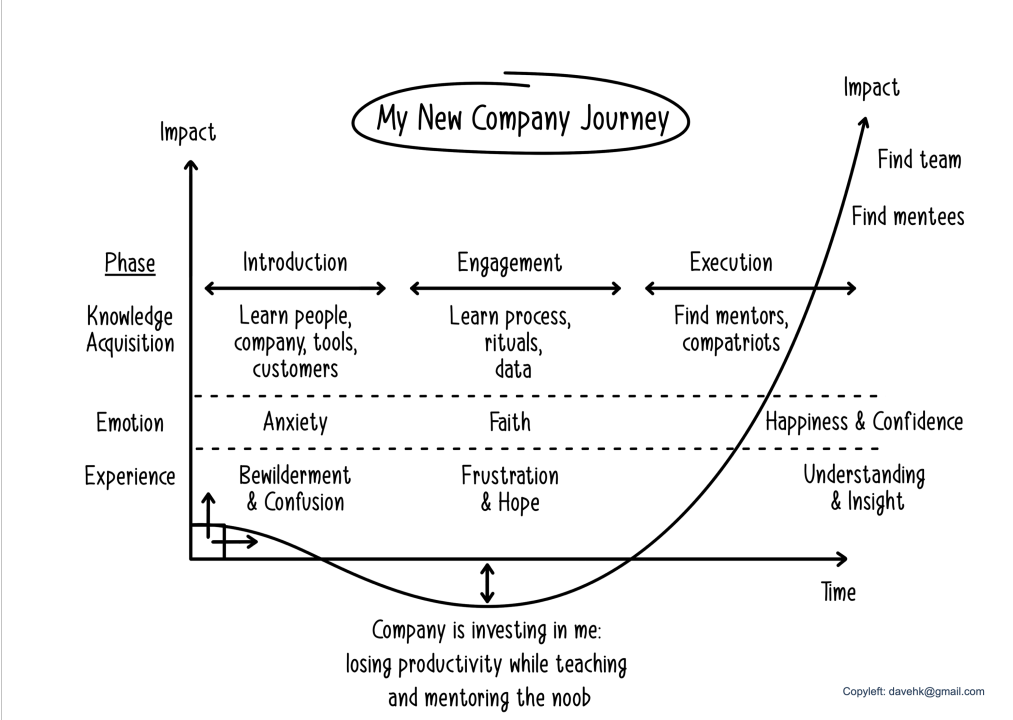A New Hire Orientation Framework: from Emotion to Impact
A Visual Framework for Candid Conversation about a New Hire's Journey
Joining a new venture is hard. For you, the person who’s joining a new team, here are some of the hurdles:
Expectations - other people's, yours.
Managing your emotions.
Finding your feet.
I've had many conversations about this over the years. This graphic has proven to be an effective conversation starter and a great tool for assessing a new hire’s own perspective on their performance.
Process
I first share this chart with an onboarding employee and explain it to them. I tell them we’ll periodically review it and during the check-in, I will ask the following questions:
Do you still think you’re where you thought you were?
What’s the hardest part for you about being here?
What do you think it will take you to move forward?
Notably:
Question 1 implicitly gives them the license to re-position themselves earlier in the process. A chart like this normalizes re-calibration and honesty.
There’s no timetable - the X-axis is “time” but the dimensions are dependent on:
The nature of the venture that the person is joining.
The nature of the role.
The maturity of the team they’re joining.
Things to think about
What matters is that you’re in alignment with the people depending on you. That’s why the 30-60-90 day check-in is a critical part of the employee onboarding process.
It provides a set of clear, joint expectations about the person in the role.
It lets us change course, adjust timetables, and augment training as needed.
In the worst-case scenario, if the role or the company is not a good fit, it provides a quantitative background for the separation conversation.
Where a lot of people struggle is “Under the Curve”. Yes, you’re having a negative impact on the company - that’s why it’s called an investment. Go easy on yourself. Recognize that this is all about the learning.
What comes next
You’re not done though when you get into Execution mode and start to create impact for the company. My expectations are clear. Once you’re settled in, there are two further ways to increase your value to the company:
For everyone: find your team. I’ll help you with that if you need to. Who will you collaborate with to get a broader cross-functional understanding of the business? As Data people, we are effective only when we have a broad understanding of the entirety of the business.
For people further along in their careers: find mentees. This is the paying-it-forward part of your journey. Who will you, as a more seasoned employee, help?
How do you know when you’re done?
It’s actually pretty easy. When you pull the chart out for the next new person and explain it to them – and relate your own journey through the chart.
Gratitudes
Thank you to Connie Wansbrough, B.Sc, M.A. , Neela Deshpande , Kim Atkinson , William Morales , and Trent Lowe for feedback on an early version of this article.
What do you think? I’d love to hear. I love to chat about this stuff, and here’s my calendar.


